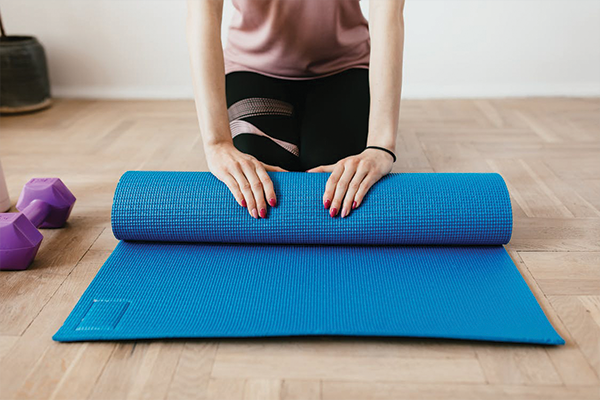Introduction
Yoga and pilates are massively popular forms of exercise meant to improve mental and physical health. Originating in ancient India, yoga is a group of exercises for the mind and body.
They range from a variety of physical postures, called asanas, and breathing exercises called pranayama for meditation. Several schools of yoga incorporate varying methods and styles, such as Ashtanga yoga, Bikram yoga, and others.
Pilates, a form of low-impact workout, was developed in the twentieth century by Joseph Pilates. He created his own system for strengthening the mind and body, thereby improving our postural alignment and flexibility.
Yoga vs. Pilates

Yoga
The beauty of yoga is that these exercises, ranging from basic to advanced, are meant for everyone. We don’t need any special equipment to perform the poses, just a yoga mat would suffice.
While performing the asanas, we need to focus on our breath. This ensures mind and body coordination and also increases inner awareness. There are several schools of yoga that have high-intensity workouts for losing bodyweight as well.
Yoga exercises are proven to improve flexibility and tone muscles. There are several cardiovascular benefits too. Those suffering from hypertension will experience lower blood pressure and calmness. The meditation and pranayama exercise not only calm the mind, but they’re also beneficial for our spiritual growth.
There are six main schools of yoga, including:
1) Hatha Yoga: Hatha means the sun and the moon’s union. This school forms the basis for all other types of yoga. It’s focused on harmonizing the dual energies of the mind and the body. When the two energies are synchronized, the third form of energy, called the kundalini or the atma (spirit) shakti, is drawn.
2) Raja Yoga: This form of yoga is also known as the ashtanga yoga, and mainly deals with the mind. It focuses on conquering the mind and harnessing its maximum potential. We must practice this form along with hatha yoga.
3) Kundalini Yoga: Its main aim is to awaken the power of the spirit (atma shakti) and balance our chakras. We can achieve this by first awakening the Ajana chakra, which is located in the middle of the brain. We must also practice raja yoga, hatha yoga, and karma yoga first.
4) Karma Yoga: Karma means awareness of our actions so that we can achieve a higher level of consciousness. It includes the meditative practice of silence so that we can become witnesses to our surroundings and our inner thoughts.
5) Jnana Yoga: Jnana means wisdom or knowledge, which comes from our inner instincts. We can achieve this through various meditative practices that are also part of raja yoga. It teaches us non-attachment, which is one of the highest yogic qualities.
6) Bhakti Yoga: Bhakti is spiritual devotion to God. To practice this form, we must first prepare by freeing ourselves from all attachments to the material. We must act in sincerity and keep the mind and body clean, stay truthful, and not hurt any living being. If we follow these basic principles, let go of our egos, and sincerely devote ourselves to God, we can experience the divine.
Pilates
Pilates is effective at strengthening the abdomen, improving our posture, flexibility and balance. Just like yoga, it also focuses on the mind and body, but is a higher-intensity workout in comparison. We can do pilates on a mat or work on a reformer, which is a special piece of equipment. However, most pilates can be done on a mat alone. pilates is also meant for everyone depending on the intensity of the workout plan we choose. There are various types:
1) Classical Pilates follows the original techniques as set by the founder, with the same equipment as built by Joseph Pilates. This form is more flexion based and follows a precise order of exercises. We must consult a physician if we have an existing health condition before practicing this form of exercise.
2) Mat Pilates is done on a mat rolled out on the floor. We don’t need any other equipment for this. Its main focus is on developing core strength. It can also be practiced in large groups.
3) Contemporary Pilates combines Pilates with various other forms of exercises such as yoga and physiotherapy. We can also use props, such as foam rollers and balls, to practice this. We don’t need to follow a set regimen to do this form.
4) Group reformer Pilates is done on a piece of equipment called the reformer. We can improve our balance, core strength, and flexibility by practicing these sets of exercises. We can also attend these classes in a group.
Conclusion
Yoga and Pilates are both exercise forms aiming at strengthening the mind and body, but there are some differences. Compared to yoga, which is beneficial for flexibility, Pilates emphasizes core strength. When it comes to spiritual growth and other aspects of one’s development, yoga offers more options.
Therefore, to choose between yoga and Pilates, we must be aware of the requirements. If you’re looking for a basic workout plan aiming at the mind and body, we can go for either yoga or Pilates or a combination of both, as they’re both beneficial.












